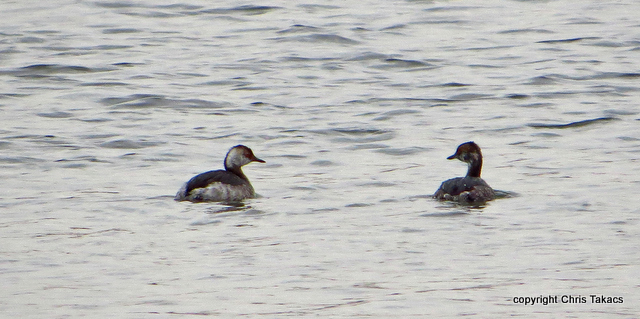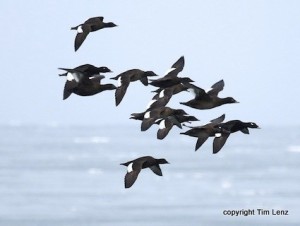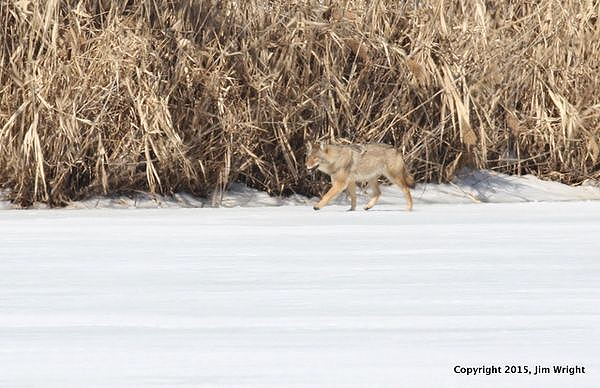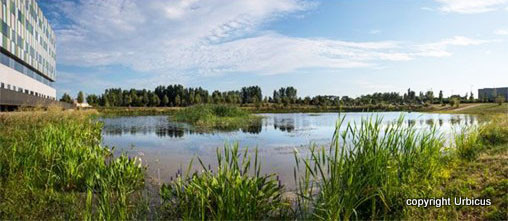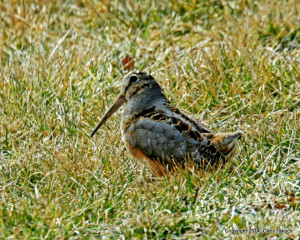 I got this note today and figured I ought to share it:
I got this note today and figured I ought to share it:
“Just as a heads up, I heard American Woodcocks calling at Laurel Hill on Monday evening starting around 725pm. There were several birds calling. A good spot to hear them is the first lot on the left, across the road from the boat launch and next to the cricket pitch in the park. The small wooded patch between the lot and the fenced in lot for Field Station Dinosaur is usually pretty reliable for at least one bird. Since there is a number of street lamps there, you can sometimes see the woodcocks as they’re either going up or coming down from their display flights. I’m not sure if the winds are going to keep them down for the next few days, but it’s usually pretty reliable to at least hear them calling.” – Ray Duffy
Monthly Archives: March 2015
St. Patty’s (Third Tuesday) Walk
People may have been discouraged by the rain falling this morning, but by 10:00 it was all over. A small group (7) of participants paused at the beginning of the Transco Trail, then continued across Lyndhurst Nature Reserve toward the Saw Mill Creek Trail where there was plenty of open water and waterfowl.
Horned Grebes generated the most excitement – two males and a female were seen diving repeatedly. Five Red-breasted Mergansers were nearby, as were some Common Mergansers, two Lesser Scaup, a Bufflehead, and a pair of snoozing Canvasbacks.
We watched two Northern Harriers chase each other above the Erie Landfill and two Red-tailed Hawks hunting on Kingsland. A group of Fish Crows passed by the power lines on their way south. And a Great Blue Heron took a long slow route overhead. There was a Black Back Gull (the largest gull in the world, at the top of the food chain) among a mixed group of gulls. We even saw a couple of Tree Swallows out there.
Two groups of Canvasbacks (about 20 in all) flew towards the Impoundment, as a group of about 30 Ring-billed Gulls and Herring Gulls stood on the diminishing ice below. Circling Lyndhurst Nature Reserve, we saw American Black Ducks and Mallards on the shore and a Fox Sparrow in the Beach Plum.
We finished with a stroll along the Kingsland Overlook trail. We heard and saw Dark-eyed Juncos, a Carolina Wren, American Robins, Red-wing Blackbirds, a few more Fox Sparrows, and a White-throated Sparrow.
Many thanks to BCAS’s Don Torino and to Chris Takacs for sharing their wealth of experience.
Help Track the Hummingbirds’ Journey North
 Citizen Science Tuesday connects you with opportunities to be a part of conservation science with outdoor projects around the world and online projects to try from the comfort of your own home. Read this article by Lisa Feldkamp, senior coordinator, new science audiences, at The Nature Conservancy, to see how you can participate.
Citizen Science Tuesday connects you with opportunities to be a part of conservation science with outdoor projects around the world and online projects to try from the comfort of your own home. Read this article by Lisa Feldkamp, senior coordinator, new science audiences, at The Nature Conservancy, to see how you can participate.
Unusual Sightings Near Saw Mill Creek
Tuesday 3/17 Walk Moved to DeKorte Park
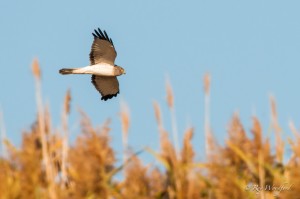 Due to construction work on Disposal Road, as well as trail conditions at Harrier Meadow, we’ve decided to move this Tuesday’s walk to DeKorte Park. Apologies for the late notice.
Due to construction work on Disposal Road, as well as trail conditions at Harrier Meadow, we’ve decided to move this Tuesday’s walk to DeKorte Park. Apologies for the late notice.
Please meet in the Environment Center parking lot at 10. And please pass this information on to anyone you think might be coming.
Call Lisa at NJMC (201-460-4658) or Don at BCAS (201-230-4983) with questions.
Native Bees are a Hidden Treasure
“Native bees are a hidden treasure. From alpine meadows in the national forests of the Rocky Mountains to the Sonoran Desert in the Coronado National Forest in Arizona and from the boreal forests of the Tongass National Forest in Alaska to the Ocala National Forest in Florida, bees can be found anywhere in North America, where flowers bloom. From forests to farms, from cities to wildlands, there are 4,000 native bee species in the United States, from the tiny Perdita minima to large carpenter bees.
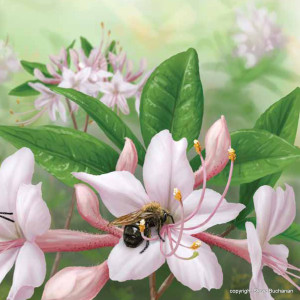 Most people do not realize that there were no honey bees in America before European settlers brought hives from Europe. These resourceful animals promptly managed to escape from domestication. As they had done for millennia in Europe and Asia, honey bees formed swarms and set up nests in hollow trees. Native pollinators have been pollinating the continent’s flowering plants since long before the arrival of honey bees. Even in today’s vastly altered landscapes, they continue to do the yeomen’s share of pollination, especially when it comes to native plants.”
Most people do not realize that there were no honey bees in America before European settlers brought hives from Europe. These resourceful animals promptly managed to escape from domestication. As they had done for millennia in Europe and Asia, honey bees formed swarms and set up nests in hollow trees. Native pollinators have been pollinating the continent’s flowering plants since long before the arrival of honey bees. Even in today’s vastly altered landscapes, they continue to do the yeomen’s share of pollination, especially when it comes to native plants.”
Thus begins the fascinating booklet Bees Basics: An Introduction to our Native Bees. Written by Beatriz Moisset, Ph.D.and Stephen Buchmann, Ph.D., and beautifully illustrated by Steve Buchanan, it is a joint publication of the USDA Forest Service and the Pollinator Partnership. Read it here.
Jim Wright, the Deer, and the Coyote
Third Tuesday Walk at Harrier Meadow
 It could be muddy, so pull on your Wellies for this 2-hour nature walk hosted by the Bergen County Audubon Society and the NJMC this coming Tuesday, March 17th.
It could be muddy, so pull on your Wellies for this 2-hour nature walk hosted by the Bergen County Audubon Society and the NJMC this coming Tuesday, March 17th.
Because of construction activity on Disposal Road, please enter from Schuyler Avenue and take extra caution when driving and parking. Please consider car-pooling if possible. Meet at 10:00 in the area outside the Harrier gate. Do not block construction traffic.
Radical Bee Hive
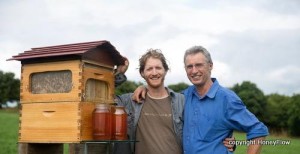 “For Australian father and son team Stuart and Cedar Anderson, founders of Honeyflow, a simple idea has changed their lives forever: Twelve days into their Indiegogo fundraising campaign, they raised more than $4.8 million and counting for Flow™, a frame system for a beehive that enables honey to be extracted just by turning on a tap.”
“For Australian father and son team Stuart and Cedar Anderson, founders of Honeyflow, a simple idea has changed their lives forever: Twelve days into their Indiegogo fundraising campaign, they raised more than $4.8 million and counting for Flow™, a frame system for a beehive that enables honey to be extracted just by turning on a tap.”
Read the article by Jessica Harlan here.
Solving Environmental Problems with Landscape Design
“Thalie Park, in Burgundy, France, is surrounded by the natural areas of the Thalie Valley. It is also located… on a former landfill at the edge of the railway infrastructure, in a flood zone; this was certainly a major point of concern in the project that needed to be tackled by the design team.”
This is just the sort of thing the NJMC has been tackling for thirty years at DeKorte Park and elsewhere the Meadowlands District.
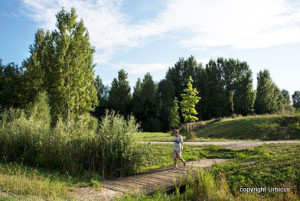 Read an overview of the French project here.
Read an overview of the French project here.

